Magnitude 6.698 Apparent magnitude (V) 6.698 | ||
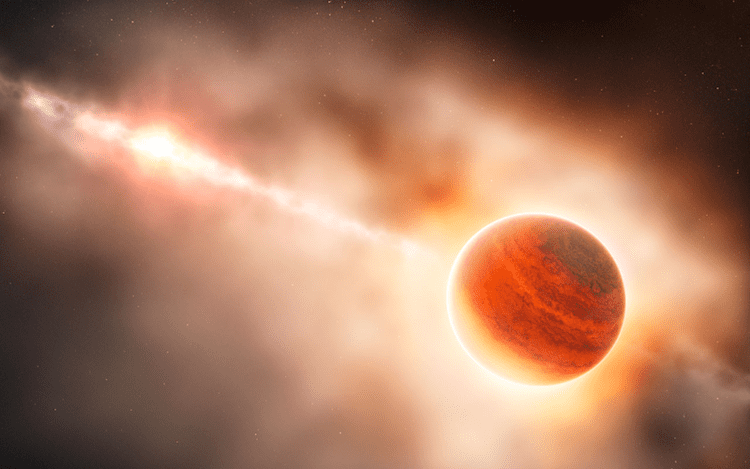 | ||
Similar HD 142527, HD 141569, Protoplanetary disk, TW Hydrae, Beta Pictoris | ||
Giant planet forming within ring of star hd 100546 discovered
HD 100546, also known as KR Muscae, is a star 320 LY from Earth. It is orbited by an approximately 20 MJ exoplanet at 6.5 AU, although further examination of the disk profile indicate it might be a more massive object such as a brown dwarf or more than one planet. The star is surrounded by a circumstellar disk from a distance of 0.2 to 4 AU, and again from 13 AU out to a few hundred AU, with evidence for a protoplanet forming at a distance of around 47 AU.
Contents
- Giant planet forming within ring of star hd 100546 discovered
- Flying through the hd 100546 system
- Possible birth of new planet
- HD 100546 b
- Protoplanetary material
- References
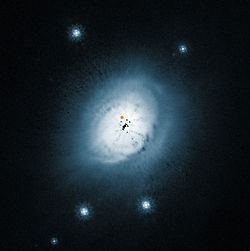
Estimated to be around 10 million years old, it is at the upper age limit of the class of stars it belongs to—Herbig Ae/Be stars, and also the nearest example to the Solar System.
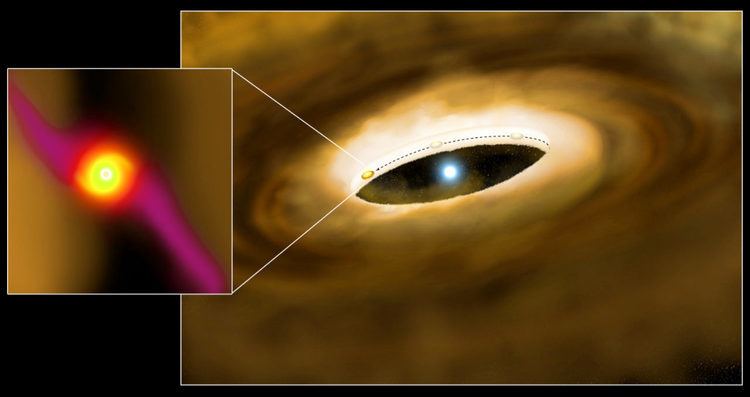
Flying through the hd 100546 system
Possible birth of new planet
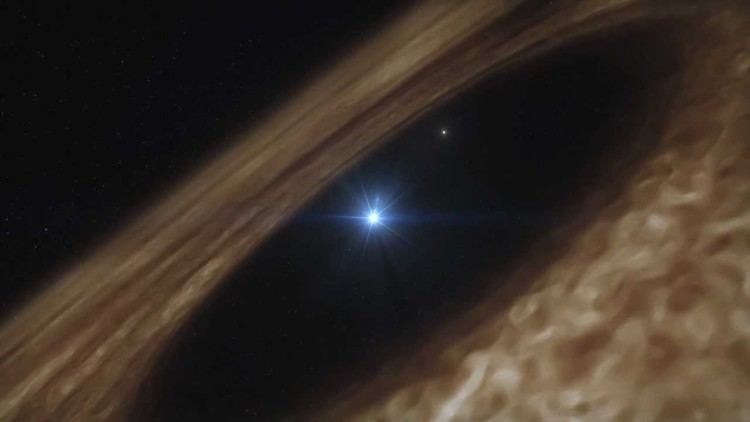
In 2013, researchers reported that they had found what seems to be a planet in the process of being formed, embedded in the star's large disc of gas and dust. If confirmed, it would represent the first opportunity to study the early stages of planet formation observationally.
HD 100546 b
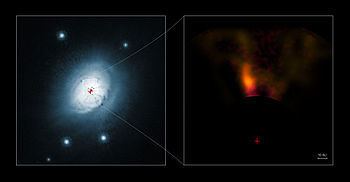
Evidence for a planetary companion to HD 100546 was gathered using the UVES echelle spectrograph at the VLT in Chile. This confirms other data indicating a planetary companion. HD 100546 b is probably the largest known exoplanet. The planet's size puts it near the border between a large planet and a brown dwarf.
Protoplanetary material
Coronagraphic optical observations with the Hubble Space Telescope show complex spiral patterns in the circumstellar disk. The causes of these structures remain uncertain. The disk colors are similar to those derived for Kuiper Belt objects, suggesting that the same weathering processes are at work in HD 100546. The disk is fairly flat, consistent with an advanced evolutionary state.
Spectroscopic analysis of mid-IR data taken from OSCIR on the 4 m Blanco Telescope at Cerro Tololo Inter-American Observatory indicates the presence of a small particles (10–18 μm) containing silicates. The material is found at distances out to 17 AU away from the star and has a temperature of approximately 227 K.
